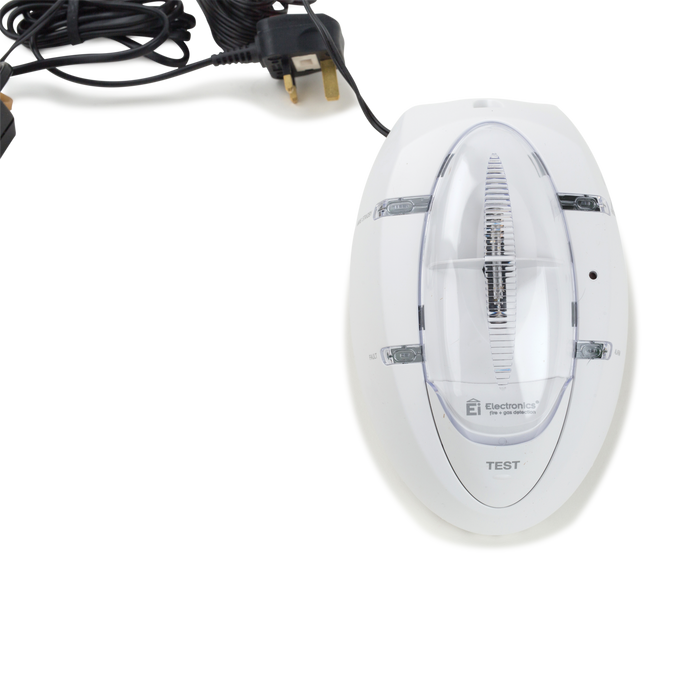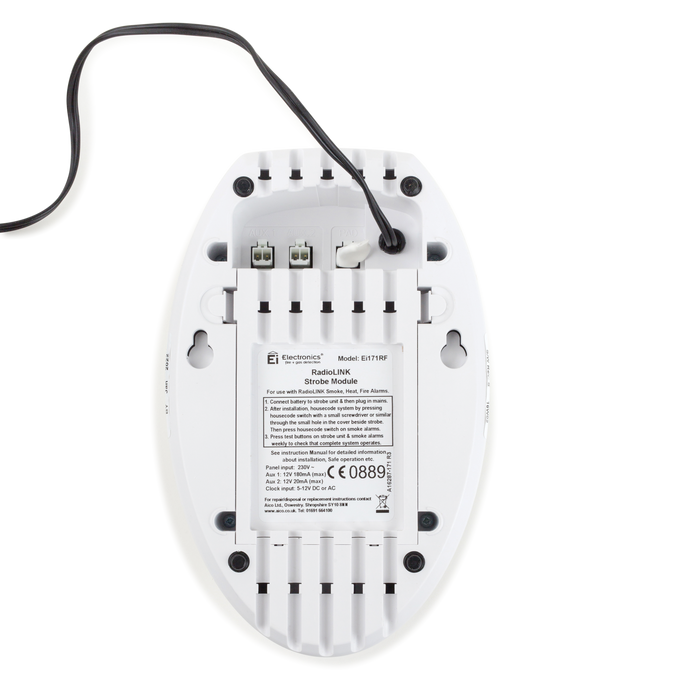
Aico Ei171RF Mains Powered RadioLINK Flashing Strobe Light 230V with Rechargeable Backup
Aico Ei171RF Mains RadioLINK Flashing Strobe Light 230V with Rechargeable Backup
Built to indicate a visual warning in living spaces, the Ei171RF is a RadioLINK alarm accessory which signals to the deaf and hard of hearing when their alarm system has activated. Equipped with a simple strobe light, it has been designed purposely for use in daytime rooms, with a specially designed lens for wide-angle light output.
Features
- Flashing strobe light for daytime rooms
- Mains powered with rechargeable lead acid back-up battery
- Wireless interconnection to the rest of the alarm system.
Specifications
- A strobe unit designed to give warning of fire to deaf and hard of hearing occupants.
- Eliminates the need for any cabling between the Ei170 RF and the smoke, heat and/or CO alarms used in the system.
- Requires 230V AC, 50Hz mains power supply.
- The unit has a built-in high-intensity Xenon strobe (flash rate 0.8Hz) with a wide light output angle.
- Built-in long life sealed lead acid rechargeable battery to provide back-up power in the event of mains failure.
- Standby capacity 7 days (followed by 15 minutes alarm) lifespan, 5 years in normal use.
- The battery is connected by plugging it into the socket in the bottom of the battery box.
- Mains transformer is mounted in separate and hard-wired to the strobe unit with 4m of low voltage cable.
- Supplied with 2m of mains cable and pre-wired 13 amp plug (with a 3 amp fuse).
- Integrated ‘Test’ button on the front of the unit.
- Pressing this checks strobe and control circuitry and also send out a RadioLINK alarm signal to other units in the system.
- Up to 12 RadioLINK units can be used in one system. For larger systems contact our Technical Department for guidance.
- Designed for wall or surface mounting.
- Ambient Temperature Range: 4°C to 40°C.
- Humidity Range: 0 to 90% relative humidity.
- 5 year guarantee.
- Manufactured in Ireland.
Data Sheet:
Click Here for Data SheetInstruction:
Click Here for Instruction


